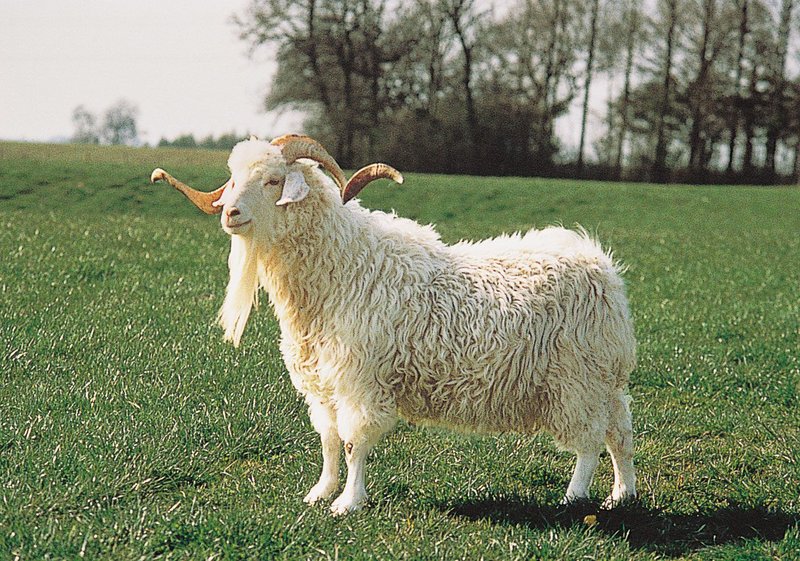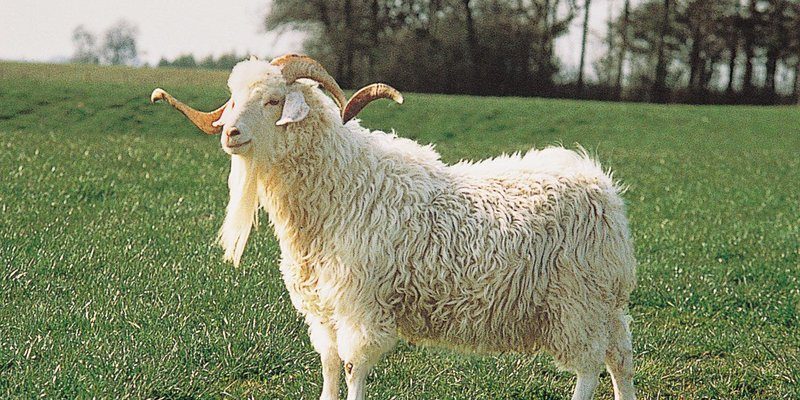
These goats originated from the region around Ankara, Turkey, where they were first domesticated over 2,000 years ago. Back then, they were cherished for their fine wool, which became a symbol of wealth and luxury. Today, Angora goats are still prized for their extraordinary fiber, and their traits contribute to their charm and usefulness. Let’s dive deeper into the history, characteristics, and primary uses of these remarkable goats.
History of Angora Goats
The story of the Angora goat begins in the ancient hills of Turkey, where they were cultivated for their unique, soft fleece called mohair. Historically, these goats were a big deal; they were often associated with nobility and wealth. In fact, the name “Angora” comes from the city of Ankara, where they were first domesticated.
As time passed, traders introduced Angora goats to different parts of the world. In the 19th century, they made their way to Europe and eventually to America. Farmers recognized the potential of these goats, and over the years, selective breeding helped enhance their traits. Today, they thrive in various climates, proving that they can adapt quite well, just like we do in different life situations.
In the United States, the Angora goat industry has become significant, especially in states like Texas and California. Farmers often showcase their goats at fairs and competitions, highlighting the beauty and quality of their mohair. With a history steeped in luxury and adaptability, these goats continue to capture people’s hearts.
Physical Traits of Angora Goats
Angora goats are incredibly distinctive, often turning heads with their long, curly fleece. Their wool can be so long and tangled that it looks almost like a fluffy cloud floating around the pasture. Their fleece comes in shades ranging from white to a variety of colors, depending on the environment and breeding.
These goats are medium-sized animals, typically weighing between 75 and 125 pounds. They have a sturdy build, with a compact body that allows them to thrive in various terrains. Their curved horns can grow quite large and give them a striking appearance. Honestly, if you saw one at a farm, you’d likely want to pet it just to feel that soft mohair!
Besides their beautiful fleece, Angora goats have gentle temperaments, making them friendly companions. They’re social creatures by nature, often grazing together in groups. If you’re considering raising them, be prepared for their affectionate nature; they enjoy interacting with humans and can even recognize their owners.
Mohair: The Luxurious Fiber
Now, let’s talk about why people adore Angora goats: their mohair. This luxurious fiber is renowned for its strength, shine, and warmth. Unlike sheep wool, mohair is smoother and has a natural luster that makes it particularly attractive for high-end textiles. If you’re curious about its properties, here’s what sets mohair apart:
- Durability: Mohair is incredibly strong, resisting wear and tear.
- Warmth: It provides excellent insulation, making it perfect for colder weather.
- Moisture-wicking: Mohair can wick away moisture, keeping you comfortable even in humid conditions.
- Versatility: It can be spun into various textures, from fine yarn to heavy fabrics.
People often use mohair in clothing, accessories, and home furnishings, such as luxurious blankets and upholstery. Imagine wearing a soft, cozy sweater made from this fiber—it’s like a warm hug on a chilly day! Designers love using mohair because of its unique sheen and texture, adding a touch of elegance to their creations.
Primary Uses of Angora Goats
Angora goats serve many purposes beyond just providing mohair. While their fleece is the star of the show, they can also be valuable for other reasons. Here are some primary uses of Angora goats:
- Fleece Production: As mentioned, their mohair is highly sought after in the textile industry.
- Meat: While not the primary purpose, some farmers raise them for goat meat, which is gaining popularity.
- Land Management: Their grazing habits help control weeds and manage pastures effectively.
- Companionship: Their friendly nature makes them excellent pets for livestock guardianship or companionship.
You might be wondering about the impact of their grazing. Angora goats can help maintain healthy pastures, preventing overgrowth and improving the landscape. This dual-purpose benefit makes them appealing to farmers looking to manage their land sustainably.
Raising Angora Goats: What to Consider
If you’re thinking about raising Angora goats, there are a few important things to consider. First off, they require adequate space for grazing and exercise. Goats are naturally curious, so they love to explore! You’ll want to provide them with a safe, spacious area to roam freely.
Secondly, their fleece requires regular maintenance. Grooming is essential to prevent mats and tangles from forming in their luxurious locks. Regular shearing usually happens twice a year, which helps keep them comfortable and lets you harvest that beautiful mohair.
Feeding them a balanced diet is crucial for their health. High-quality hay, pasture, and supplements will keep them happy and healthy. Don’t forget to provide fresh water daily! Healthy, happy goats will produce high-quality fiber that you’ll want to show off.
The Economic Impact of Angora Goats
Angora goats contribute significantly to rural economies. The mohair industry creates jobs in farming, processing, and retail, providing opportunities for many people. Farmers often participate in local and national mohair competitions to showcase their animals, elevating the breed’s status and encouraging higher prices for their fiber.
Additionally, the uniqueness of mohair helps maintain a niche market. People are often willing to pay a premium for high-quality products, so if you raise Angora goats, you’re stepping into a lucrative industry. Plus, they can be a great way to teach future generations about sustainable farming practices and the importance of animal husbandry.
Challenges of Raising Angora Goats
Despite their many advantages, raising Angora goats comes with its challenges. First, you’ll need to be vigilant about their health. Like all animals, they can be susceptible to various diseases. Regular veterinary check-ups and vaccinations will help keep them in tip-top shape.
Another challenge is the market fluctuation of mohair prices. Depending on demand, you might face ups and downs that can affect your profits. Being prepared for these changes and having a solid business plan can help you navigate the financial waters.
Lastly, maintaining their fleece can be labor-intensive. Grooming and shearing require time and effort, so if you’re not up for that level of commitment, this breed might not be the best fit for you.
In conclusion, the Angora goat is a remarkable breed with a rich history, unique traits, and numerous uses. Whether you’re drawn to them for their luxurious mohair, friendly demeanor, or their role in sustainable farming, there’s no denying their special place in agriculture. While they may require dedication and care, the rewards of raising Angora goats can be both fulfilling and profitable. So, if you’re thinking about adding some charm to your farm, these goats just might be the perfect addition!

